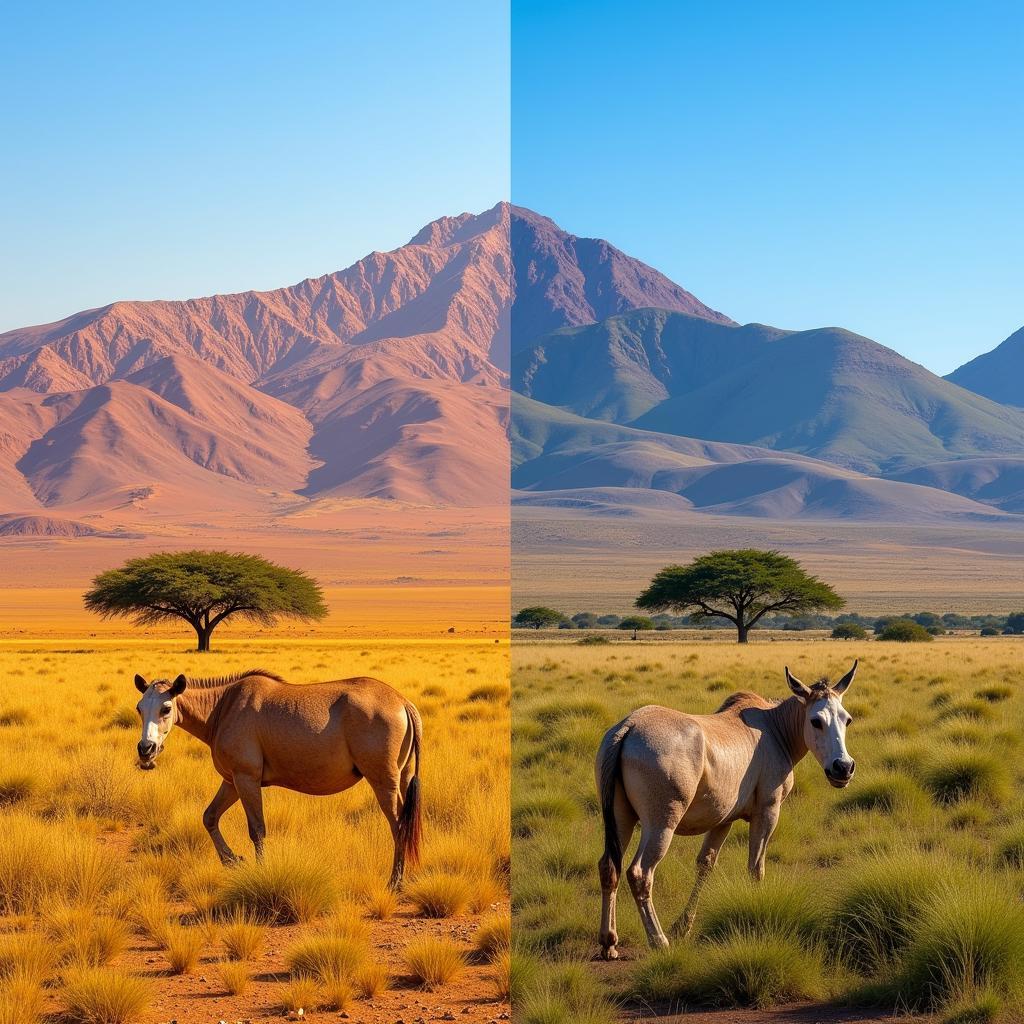The African Elephant Food Chain: A Journey Through the Circle of Life
African elephants, majestic giants roaming the savannas and forests of Africa, are integral to the intricate web of life that defines the continent’s ecosystems. Their role as herbivores, consuming vast quantities of vegetation, shapes the landscape and influences the food chain dynamics in ways that are both fascinating and essential for the balance of nature. In this exploration, we’ll dive into the complex world of the African Elephant Food Chain, uncovering the interconnected relationships that make up this intricate system.
From the Grass to the Top: Understanding the Levels
The African elephant food chain is a classic example of a food web, with multiple interconnected pathways and organisms playing different roles. It can be broadly categorized into trophic levels:
1. Producers: The Foundation of Life
At the base of this food chain lie the producers, primarily plants. These are the primary source of energy for the entire ecosystem, converting sunlight into usable energy through photosynthesis. African elephants, being herbivores, are primary consumers who rely directly on these producers for their sustenance.
2. Primary Consumers: The Herbivores
African elephants, along with other herbivores like zebras, giraffes, and wildebeests, constitute the primary consumers. They consume vast quantities of vegetation, converting plant energy into animal energy. Elephants are particularly influential due to their size and dietary preferences, impacting vegetation distribution and influencing the availability of resources for other herbivores.
3. Secondary Consumers: The Predators
Predators, such as lions, leopards, and hyenas, are the secondary consumers, preying on herbivores like elephants. These carnivores play a crucial role in regulating herbivore populations and maintaining ecosystem balance. While lions and leopards may occasionally target young or weak elephants, they rarely pose a significant threat to adult elephants due to their size and strength.
4. Decomposers: The Silent Recyclers
Decomposers, including bacteria, fungi, and insects, are essential for breaking down dead organisms and waste products, returning nutrients back into the soil. This recycling of nutrients is crucial for the continued growth and productivity of the ecosystem, ensuring that the cycle of life continues.
The Elephant’s Impact: More Than Just a Grazer
African elephants, as keystone species, have a disproportionately large impact on their ecosystem. Their feeding habits, coupled with their size and strength, contribute to shaping the landscape and influencing the food chain in several ways:
1. Shaping the Vegetation
Elephants are voracious eaters, consuming a vast variety of plants, including grasses, leaves, bark, fruits, and even tree roots. Their feeding habits can create open spaces within forests, allowing sunlight to reach the forest floor and encouraging the growth of new plants and trees.
2. Creating Waterholes
Elephants often dig holes in the ground to reach water during dry seasons, creating vital watering holes for other animals. These waterholes also attract other animals, contributing to biodiversity and ecological stability.
3. Seed Dispersal
Elephants consume large quantities of fruits and disperse seeds through their dung. This process helps to spread plant species, promoting genetic diversity and contributing to the resilience of the ecosystem.
The Interplay of Species: A delicate Balance
The African elephant food chain is a delicate balance of interconnected relationships, with each species playing a crucial role in maintaining ecosystem stability.
“Elephants are crucial for maintaining the diversity and abundance of plant life in African ecosystems,” states Dr. Anya Sharma, a renowned wildlife biologist specializing in elephant ecology. “Their feeding habits, combined with their impact on the landscape, contribute to the health and resilience of the African ecosystem.”
The Threats to the Chain: Human Impact and Conservation
Human activities, including habitat loss, poaching, and climate change, pose significant threats to the African elephant food chain. These threats disrupt the delicate balance of the ecosystem, leading to cascading effects that can impact the entire food web.
“The decline of elephant populations not only affects their own species but also has ripple effects throughout the entire ecosystem,” notes Dr. Thomas Jackson, an expert in conservation biology. “It is essential that we prioritize conservation efforts to protect these magnificent creatures and ensure the sustainability of the African ecosystem.”
FAQ
- What are the main threats to African elephants? Habitat loss, poaching for ivory, and human-wildlife conflict are the primary threats.
- How do African elephants benefit the ecosystem? They create waterholes, disperse seeds, and shape vegetation, contributing to biodiversity and ecosystem resilience.
- What can be done to protect African elephants? Supporting anti-poaching efforts, promoting sustainable land management, and raising awareness about the importance of conservation are crucial steps.
- What is the role of lions in the African elephant food chain? Lions are apex predators that occasionally prey on young or weak elephants, playing a role in regulating elephant populations.
- How does the food chain affect the survival of elephants? The availability of food and water, the presence of predators, and the overall health of the ecosystem all impact elephant survival.
The African Elephant: An Icon of Resilience
The African elephant food chain is a testament to the intricate web of life that connects all living organisms. Understanding these complex relationships is crucial for appreciating the vital role that elephants play in the African ecosystem and for recognizing the importance of conservation efforts to protect these magnificent creatures.



